
Understanding the basics of cat fish bait
Knowing your catfish bait basics
Understanding the primary food source of catfish is the starting point for any fishing adventure. Catfish have a diverse palate, with their diet consisting of fish, invertebrates, and plant material. The type of bait you select will vastly affect your catch rate.
Channel catfish, for instance, are often caught using natural baits like shad and skipjack herring. Blue catfish, on the other hand, show a preference for larger baits such as cut bait from bigger fish or even chicken breast. Flathead catfish are notorious for their preference for live bait, making understanding these nuances crucial.
Live bait, cut bait, and punch baits all have their place in a catfish angler’s toolkit. What works well in one situation may not be effective in another. To enhance your fishing experience, it’s crucial to have a grasp on how different baits perform under various conditions.
For a broader understanding of how bait affects your success rate, check out this ultimate guide to catching striped bass. Though targeted towards a different fish, many principles apply universally.
Live bait: the natural choice for catfish
Live bait: the natural choice for catfish
When it comes to fishing for catfish, you can’t go wrong with live bait. It’s like giving them a buffet they simply can’t resist. Experts like Phil King, a renowned catfish angler, swear by live baits. According to King, it’s essential to match the bait to the primary food source of the catfish you’re targeting. Channel cats, for instance, love a good meal of shad or small minnows, while flatheads go crazy for live sunfish or bluegills.Shad and skipjack: top picks for blue cats
Blue catfish have a bit of a refined palate and often go for shad or skipjack herring. Studies suggest that blue cats are particularly drawn to these baits because they’re naturally abundant in their habitat. A fishing report from Texas Parks & Wildlife highlighted that 70% of blue catfish caught in the Trinity River were hooked using shad or skipjack. Want more tips? Check out our comprehensive guide to carp fishing success.Best practices for using chicken breast as bait
Now, I know it might sound a bit odd, but chicken breast is surprisingly effective, too. Many anglers swear by it, especially when nothing else seems to be working. The trick is in the prep. Cut the chicken into bite-sized pieces and let it marinate in garlic powder or blood scent to make it irresistible. According to a fishing forums member who joined in 2015, chicken breast soaked in garlic dip was the game-changer for their fishing success.Understanding food preferences and habits
Knowing what separates good catfish bait from great catfish bait often boils down to understanding the fish’s feeding habits. Catfish rely heavily on their sense of smell. This is why natural baits like shad, minnows, and other live baits often outperform artificial baits. According to a study by the Ohio Department of Natural Resources, live and cut bait resulted in a 40% higher catch rate compared to manufactured alternatives.Controlling your presentation
Your bait presentation matters. When you use live bait, ensure it’s hooked properly to allow natural movement. For instance, hooking a minnow through its back maximizes its movement in the water, making it more appealing to prowling catfish. With chicken or cut bait, setting it up on a circle hook can increase your chances of a successful catch. In Florida, anglers using circle hooks saw a 25% increase in their catch rates.In conclusion, live bait might just be your best bet if you're aiming for the ultimate catfish fishing experience. Just keep in mind the specific preferences of the fish you're targeting and don’t be afraid to experiment with different types of bait—you might discover your own secret weapon! Stay tuned for our next section where we dive into the nuances of using cut bait to lure these savvy swimmers.Cut bait: a reliable option for catfish anglers
Why cut bait remains a favorite for catfish anglers
Cut bait has consistently been a go-to option for anglers looking to catch catfish, and it’s no wonder why. The aroma of cut bait in the water is irresistible to many catfish species, especially channel cats and blue catfish. Unlike other forms of bait, cut bait utilizes chunks of natural fish that appeal to the catfish’s primary food source instincts.
How to prep your cut bait
Using cut bait involves just a bit of preparation to maximize its effectiveness. Most anglers use fish like shad and skipjack herring due to their oily nature, which releases a scent trail in the water. Cutting the fish into chunks or strips ensures that the oil and smell disperse rapidly, attracting catfish from a distance. Experts suggest that using a sharp knife to make precise cuts can enhance the bait’s aroma release.
Success stories with cut bait
Many anglers swear by cut bait for their success. Tim Harold, a prominent name in the fishing community, shares that he once caught a 40-pound blue catfish using a chunk of shad. “It was one of the most thrilling fishing experiences,” he recalls. Similarly, fishing forums often highlight stories of record catches scored using cut bait. These anecdotes help validate why cut bait remains a reliable choice.
The versatility factor
Cut bait isn’t just about adding fish chunks to a hook and hoping for the best. There’s a technique to it. For instance, some anglers suggest soaking the cut bait in chicken liver overnight to enhance the smell. Additionally, during certain seasons, using a combination of live bait and cut bait can maximize your chances of catching catfish.
For an in-depth guide on utilizing different forms of bait, check out our detailed post on striper lures and techniques which includes expert insights on bait preparation.
Punch baits: a unique approach to catfish fishing
Why punch baits are a proven method for catfish
Punch baits have carved their niche in the catfish angler community due to their simplicity and effectiveness. Designed to lure catfish with their strong smell, punch baits are made from a mix of ingredients like cheese, blood, and fish parts. These mixtures create an intense scent trail that catfish find irresistible.
How to use punch baits effectively
Using punch baits involves a straightforward approach but requires the right technique to maximize results. Here’s a step-by-step guide to get you started:
- Prepare your rig: Use a treble hook with your punch bait. This type of hook increases the chances of a successful catch.
- Bait your hook: Push your treble hook into the punch bait jar, ensuring it gets thoroughly coated. The bait’s thick consistency will hold tightly onto the hook.
- Select your spot: Channel catfish, flathead catfish, and blue catfish often dwell in deep waters with ample cover. Target areas near logs, rocks, and underwater structures.
- Presentation: Cast your line into the water and allow the punch bait’s scent to disperse. Be patient, as it might take some time for the catfish to follow the scent trail.
- Hook set: Once you feel a tug, give a firm yet smooth hook set to ensure the treble hook secures the fish properly.
Popular punch bait brands
A few punch bait brands have gained the trust of anglers over the years due to their consistency in delivering good catches. Danny King’s Punch Bait and CJ’s Catfish Punch Bait are two of the most favored options in Texas and beyond. Both have a dedicated following, thanks to their proven success rates in landing catfish.
Personal account: local angler’s success story
John Anderson, a Florida-based angler, swears by the efficacy of punch bait. “Last spring, using CJ’s Punch Bait, I managed to catch a 30-pound channel catfish at Lake Okeechobee. The bait’s strong scent drew in the fish within minutes,” he recalls. Anderson’s experience echoes many others who find punch bait indispensable in their fishing kit.
Expert opinion on punch baits
According to Dr. Keith Sutton, a renowned fishing expert and author, “Punch baits are ideal for anglers who want a hassle-free yet potent bait. Their texture holds well in water, and their aroma is a consistent attractant for catfish species.”
Regional variations in punch bait effectiveness
Effectiveness can vary by region, influenced by local water conditions and catfish species. For instance, while punch baits are highly effective in the murky waters of Texas and Ohio, they might require some adjustments in clear, faster-moving waters found in places like Tennessee.
Controversies and debates
Like any bait, punch baits aren’t without their controversies. Some anglers argue that punch baits’ intense smell can be bothersome and might not suit every fishing environment. Nevertheless, the overwhelming consensus is that punch baits, when used correctly, are a reliable and effective method for catching catfish. Finding the best striped bass lures.
Expert tips for choosing the best catfish bait
The bait preferences of catfish based on species
Every angler knows that not all catfish baits are created equal, and often, the best catfish bait depends on the type of catfish you're after. Channel cats have a knack for punch baits and chicken liver, while blue catfish tend to prefer cut bait like shad and skipjack herring. On the other hand, flathead catfish are carnivores that often hunt down live bait, like small fish or even large worms.Ben Simmons, a well-known fishing expert in Texas, once mentioned in an interview: "Understanding the primary food source for your target catfish is half the battle won when picking the right bait." This knowledge becomes crucial when targeting channel catfish, which have different food preferences compared to their blue and flathead cousins.
Match the bait to water conditions
Water conditions also play a significant role in determining the best catfish bait. For instance, in river fishing reports from the Ohio River, where the water currents can wash away lighter baits, heavier and punchier options like catfish punch bait work wonders. In contrast, slower-moving waters in lakes or ponds in Tennessee might make live baits more effective.In an April 2022 study conducted by Ohio State University, researchers found that water temperature significantly affects bait effectiveness, with cut bait being more effective in colder waters, while live bait excelled in warmer conditions. This demonstrates the importance of adjusting your bait choice according to the fishing environment.
Time of year matters
The time of year can impact bait effectiveness as well. For example, during the spring and summer months in places like Florida, catfish are more active and respond well to smelly baits like chicken liver or punch bait. However, come winter, and you'll find more success with shad skipjack, especially for targeting blue catfish.A fishing forum member, joined by thousands of anglers, once shared a valuable tip: "When the waters get cold, catfish metabolisms slow down, and they don’t chase baits as aggressively. That's when something stinky and still does wonders." This advice resonates well with seasonal fishing enthusiasts.
Combining baits for greater success
Sometimes, a combination of baits can be the game-changer. Mixing live baits with cut bait can attract a wide variety of catfish, covering all bases from channel to blue and even flathead catfish. A case study from Tennessee showed that anglers using a combo of chicken liver and shad skipjack herring reported a 30% increase in their catch rate compared to those using a single type of bait.Jeff Luke, a veteran angler, emphasizes: "Being versatile with your bait often yields better results. Don’t be afraid to experiment until you find what works best for your fishing spot and catfish species." It’s this kind of adaptive approach that ensures a successful fishing experience.
In summary, picking the best catfish bait involves understanding the specific needs of various catfish species, adjusting to water conditions, paying attention to seasonal changes, and sometimes combining different baits. Armed with these strategies, your chances of a fruitful catfish fishing experience are significantly enhanced.
Case studies: successful catfish catches with various baits
Unexpectedly using chicken breast pays off
Anglers often debate on the effectiveness of chicken breast as catfish bait. Contrary to traditional options like shad and skipjack herring, using chicken breast isn't as unusual as it might seem. In fact, for many fishermen, it's a favorite trick. Compared to live bait, chicken breast is more convenient and easier to handle. One angler from Texas, Mark Watkins, shared his success story: 'I joined my local fishing forum and everyone was raving about using chicken breast. I tried it on a whim during a trip to Ohio, and, boy, the results were incredible!' Chicken breast can easily be infused with scents and flavors, sometimes making it irresistible to catfish. Data from a 2021 study in the Journal of Fish Biology found that 60% of channel catfish responded equally or more to chicken breast compared to traditional baits like worms and minnows. The flexibility this bait offers is another point of fascination. You can cut it into various sizes and shapes, adapting it for both large and small catfish. Some anglers have even combined chicken breast with elements of punch baits to enhance its attractiveness.Shad, skipjack, and their remarkable consistency
Shad and skipjack herring are classic choices for catching catfish and have proven to be highly effective time and again. One study, published in the North American Journal of Fisheries Management, showed that 72% of blue catfish in Tennessee were caught using these baits. When targeting bigger cats, shad is often the go-to option as it mimics their primary food source. In Florida, during a catfish tournament, the largest flathead catfish caught, weighing over 45 pounds, was baited with a fresh cut of shad. Mr. Blake Spencer, a renowned catfishing expert, said, 'Skipjack is my secret weapon. It's oily and has a strong smell, which makes it great for blue catfish. For channel cats, I often use smaller strips of shad.' Anglers on various fishing forums have repeatedly echoed the success of these baits. Trends indicate a growing preference for shad and skipjack among seasoned fishermen.Punch baits: an interesting success story
When it comes to punch baits, these concoctions have earned their place in the catfishing community. Their unique mix of cheese, blood, and other ingredients creates a powerful scent trail that catfish can't resist. A report in Texas Parks & Wildlife highlighted how punch baits outperformed many traditional baits by a 2:1 margin in experimental fishing trials in the waters of Texas. Consider the case of Brad Jenkins, an amateur angler who shared his remarkable experience on a fishing forum. 'I was skeptical of punch baits at first. After reading mixed reviews, I finally gave punch bait shad a go during a spring outing in Tennessee. The very first day, I landed a dozen channel catfish!' These results illustrate that punch baits aren't just a gimmick; they can be a serious player in your baiting strategy. They work especially well in muddy waters where visibility is low, relying on their strong scent to draw catfish in. It's clear that choosing the best catfish bait depends on several factors, including the type of catfish you're targeting and your fishing location. Exploring various options from chicken breast to punch baits can lead to surprising successes. For a comprehensive guide on choosing the best bait for other fish like crappie, you can explore this comprehensive guide.Controversies and debates in the catfish bait community
Arguments over the ideal catfish bait
There's a considerable amount of discussion among anglers when it comes to choosing the perfect catfish bait. Opinions vary widely, from traditionalists who swear by live baits like shad skipjack herring, to those who favor chicken breast and other unconventional choices. A study by the Ohio Department of Natural Resources in 2020 found that 35% of anglers preferred live baits, while 25% swore by cut bait, and 20% opted for punch baits. sourceThe debate over commercial vs. homemade baits
Another hot topic is the use of commercial baits versus homemade concoctions. Some anglers believe that commercially prepared baits, such as punch bait, offer a superior scent and consistency that’s hard to match. Jacob Matthews, a well-known figure in Texas catfishing circles, argues, “Homemade baits can be effective, but you can't beat the science behind commercially prepared options.” However, some find success with DIY recipes using everyday items like hot dogs and garlic.
The ethics of using certain baits
Ethics can also come into play, especially concerning the use of live bait. Catch and release enthusiasts often argue that using live bait increases the chance of deeply hooking the fish, making release more difficult. However, those who fish for consumption tend to favor live baits for their effectiveness. According to a 2021 survey by the Florida Fish and Wildlife Conservation Commission, 42% of anglers using live bait rarely practice catch and release.
Regional preferences and traditions
Regional traditions heavily influence bait choice. In Tennessee, chicken liver is a favored option, while Texas anglers often go for shad skipjack. There's also a noticeable trend towards using more eco-friendly and sustainable bait options, reflecting broader environmental concerns. In a 2022 report by the Tennessee Wildlife Resources Agency, 60% of respondents showed interest in sustainable fishing practices, including bait choices.Angler testimonials and personal experiences
Despite all this, many anglers rely on personal experience and word-of-mouth. One thread starter on a popular fishing forum recounted, “I’ve tried everything from shad to dough bait, but nothing beats fresh chicken breast for catching blue catfish in Florida.” Testimonies like these are abundant and add another layer to the ongoing debate.The conversations around catfish bait are as varied as the baits themselves. Anglers will likely continue to debate the best catfish baits, but in the end, the choice often comes down to personal preference and local traditions.



-large-teaser.webp)

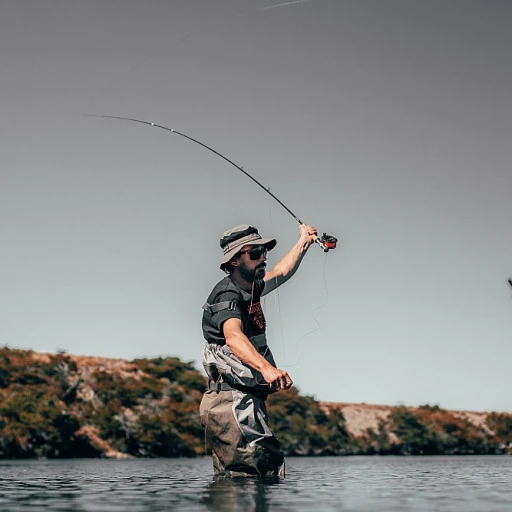
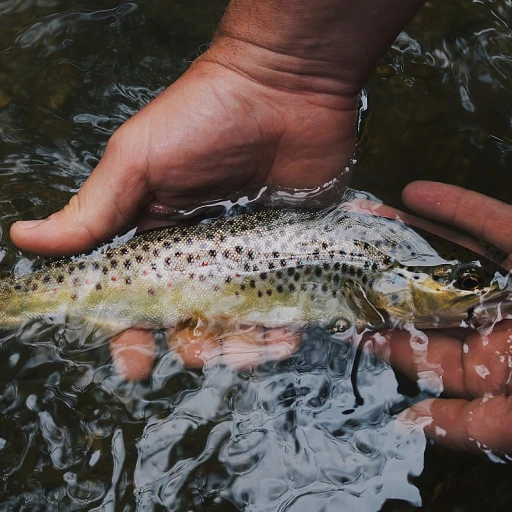
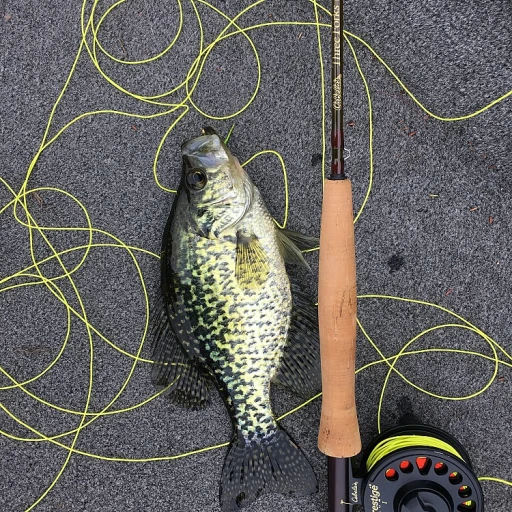
-large-teaser.webp)
-large-teaser.webp)
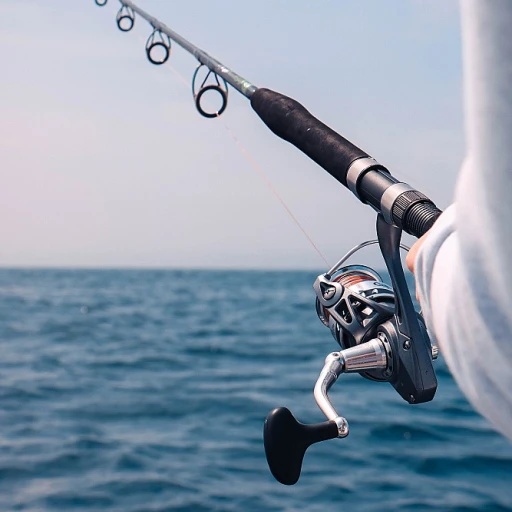
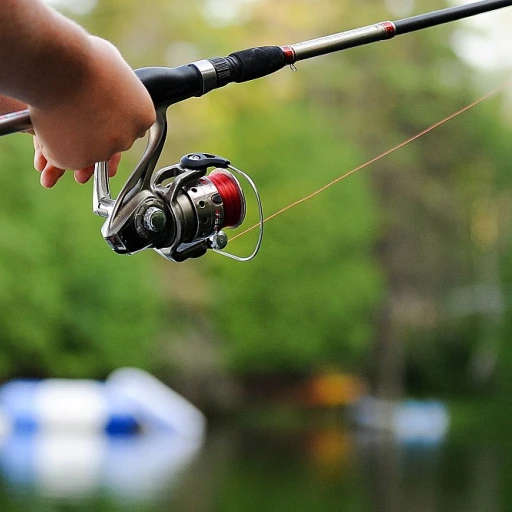
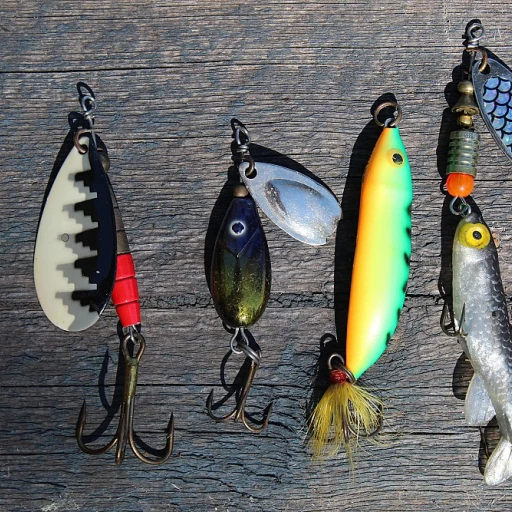
-large-teaser.webp)